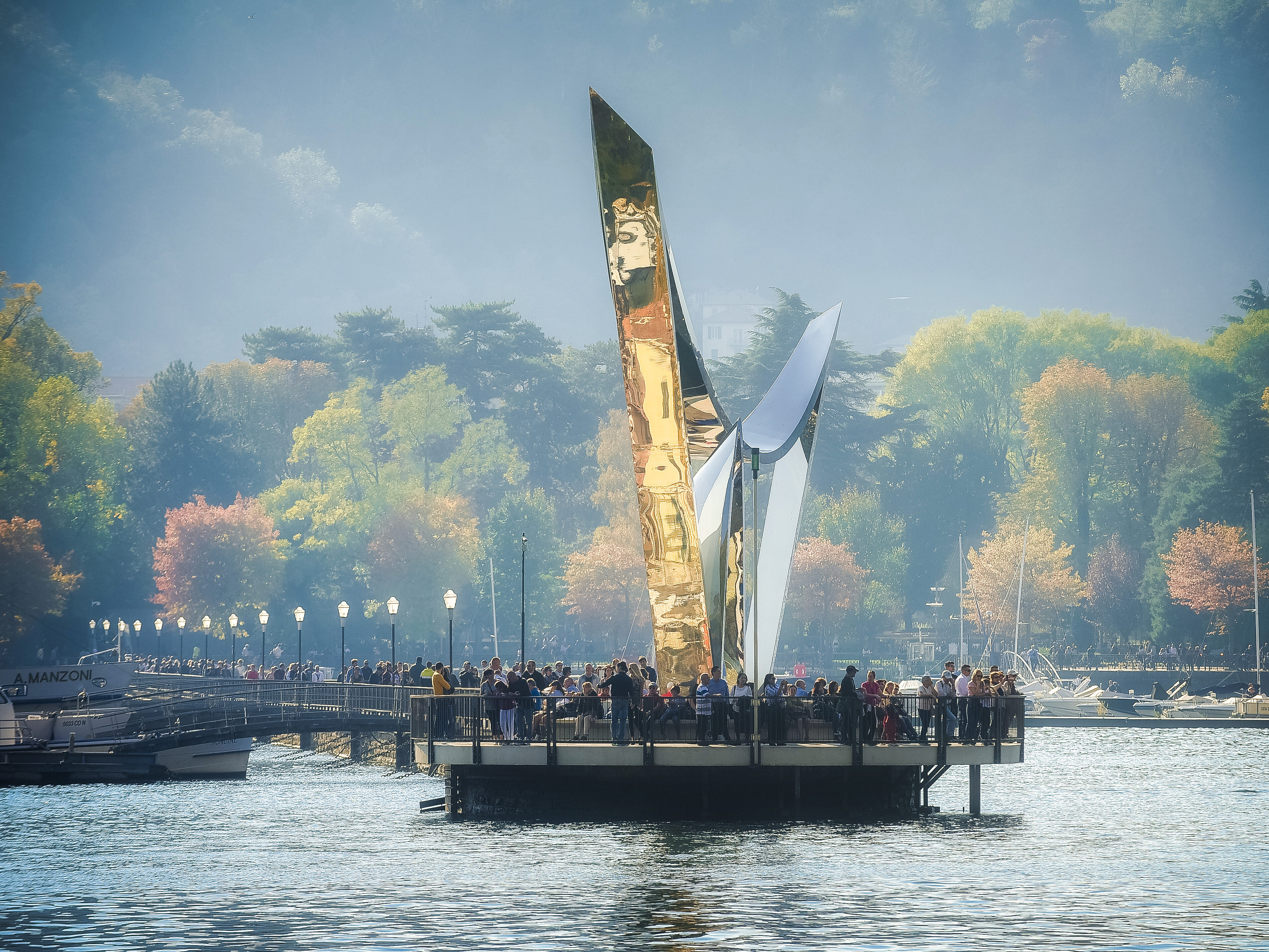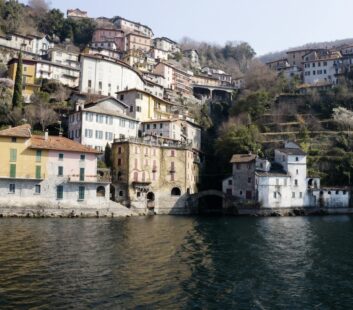
VISIT COMO
Discover the Architectural Must-sees of Como’s Beautiful Cityscape
Stadio Sinigaglia, home to Como 1907, was built in the same years as other masterpieces in town.
Let’s discover the architectural must-sees of this beautiful cityscape.
Architecture holds a privileged place in the history of Como, and this becomes even clearer when strolling through the city streets. Between the two World Wars, one of the projects of Como architect Giuseppe Terragni, Casa del Fascio (1932), just behind the cathedral, becomes the symbol of the Italian rationalism movement. Starting from the center, we can head to the rationalism quarter up to Stadio Sinigaglia, home to Como 1907. On the way, at the apex of Diga Foranea, we can stop by Life Electric by starchitect Daniel Libeskind for a memorable souvenir photo.
The rationalism quarter
The rationalism movement brought great architects and artists to Como, whose works gave the city a distinctive character, made of essential lines with decorative elements expunged. The first building to catch the eye is the Novocomum (1929), at the side of the stadium, a project by architect Giuseppe Terragni. Novocomum – known as “Transatlantico” (ocean liner) due to its appearance reminiscent of a ship – is the first valuable example of Italian rationalism.
From the rooftop, one has a privileged view of the stadium, built between 1925 and 1927. The building keeps concrete-framed glass blocks from the original project from which a special light filters through on sunny days.
Next to the stadium stands Monumento ai Caduti, dedicated to the soldiers who died during WWI. Urban visionary Antonio Sant’Elia’s design was the inspiration for the project.
You only have to turn towards Brunate and its funicular to catch a glimpse of an iconic monument, the Tempio Voltiano, whose image stood out on the 10,000 lire note until the introduction of the Euro. Tempio Voltiano houses Alessandro Volta’s scientific instruments, and it is the perfect place to grasp the grandeur of the most known physicist from Como, who invented the electric battery in 1800. The temple style is neoclassical, far from the lines of rationalism, but in flawless dialogue with the nearby monuments.
Rationalism architecture in Como
To visit around Stadio Sinigaglia
Novocomum, viale Sinigaglia 1
Monumento ai Caduti, viale Puecher
Canottieri Lario, viale Puecher 6
Aeroclub Como, viale Masia 44
Casa Giuliani-Frigerio, viale Rosselli 24
To visit in town
Casa del Fascio, piazza del Popolo 4
Asilo Sant’Elia, via Alciato 15
Fontana di Camerlata, piazza Camerlata
Hotels
If we move from here towards the town of Cernobbio, right behind Villa Olmo, we find the Hilton Lake Como Hotel, which opened in 2018 in an area that used to house a silk factory. The building is reminiscent of industrial architecture, with large windows and a rooftop offering a wonderful panorama and delicious drinks and food. On the opposite shore of the lake, in Torno, is Il Sereno Hotel by architect and designer Patricia Urquiola, who reinterpreted Giuseppe Terragni’s Casa del Fascio in a contemporary manner.
To visit
Hilton Lake Como, via Borgo Vico 241, Como
Il Sereno, via Torrazza 10, Torno
Isola Comacina and their artists’ houses
Right in front of Ossucio’s shores is Isola Comacina, the only island on Lake Como. Here, in the first decades of the last century, Milan’s Brera Academy of Fine Arts promoted an experimental project for three stone houses by local architect Pietro Lingeri intended to host artists aiming at spending some time in an iconic and inspiring environment.
Did you know…?
The first concrete building in Como is Politeama, designed by architect Federico Frigerio and built in 1910. Once a theatre and then a cinema, today it is awaiting renovation. Politeama is in Piazza Cacciatori delle Alpi 3, in the center of the town.

